Caffeine dosing regimens in preterm infants with or at risk for apnea of prematurity
- PMID: 37040532
- PMCID: PMC10089673
- DOI: 10.1002/14651858.CD013873.pub2
Caffeine dosing regimens in preterm infants with or at risk for apnea of prematurity
Abstract
Background: Very preterm infants often require respiratory support and are therefore exposed to an increased risk of bronchopulmonary dysplasia (chronic lung disease) and later neurodevelopmental disability. Caffeine is widely used to prevent and treat apnea (temporal cessation of breathing) associated with prematurity and facilitate extubation. Though widely recognized dosage regimes have been used for decades, higher doses have been suggested to further improve neonatal outcomes. However, observational studies suggest that higher doses may be associated with harm.
Objectives: To determine the effects of higher versus standard doses of caffeine on mortality and major neurodevelopmental disability in preterm infants with (or at risk of) apnea, or peri-extubation.
Search methods: We searched CENTRAL, MEDLINE, Embase, CINAHL, the World Health Organization (WHO) International Clinical Trials Registry Platform (ICTRP), and clinicaltrials.gov in May 2022. The reference lists of relevant articles were also checked to identify additional studies.
Selection criteria: We included randomized (RCTs), quasi-RCTs and cluster-RCTs, comparing high-dose to standard-dose strategies in preterm infants. High-dose strategies were defined as a high-loading dose (more than 20 mg of caffeine citrate/kg) or a high-maintenance dose (more than 10 mg of caffeine citrate/kg/day). Standard-dose strategies were defined as a standard-loading dose (20 mg or less of caffeine citrate/kg) or a standard-maintenance dose (10 mg or less of caffeine citrate/kg/day). We specified three additional comparisons according to the indication for commencing caffeine: 1) prevention trials, i.e. preterm infants born at less than 34 weeks' gestation, who are at risk for apnea; 2) treatment trials, i.e. preterm infants born at less than 37 weeks' gestation, with signs of apnea; 3) extubation trials: preterm infants born at less than 34 weeks' gestation, prior to planned extubation.
Data collection and analysis: We used standard methodological procedures expected by Cochrane. We evaluated treatment effects using a fixed-effect model with risk ratio (RR) for categorical data and mean, standard deviation (SD), and mean difference (MD) for continuous data. MAIN RESULTS: We included seven trials enrolling 894 very preterm infants (reported in Comparison 1, i.e. any indication). Two studies included infants for apnea prevention (Comparison 2), four studies for apnea treatment (Comparison 3) and two for extubation management (Comparison 4); in one study, indication for caffeine administration was both apnea treatment and extubation management (reported in Comparison 1, Comparison 3 and Comparison 4). In the high-dose groups, loading and maintenance caffeine doses ranged from 30 mg/kg to 80 mg/kg, and 12 mg/kg to 30 mg/kg, respectively; in the standard-dose groups, loading and maintenance caffeine doses ranged from 6 mg/kg to 25 mg/kg, and 3 mg/kg to 10 mg/kg, respectively. Two studies had three study groups: infants were randomized in three different doses (two of them matched our definition of high dose and one matched our definition of standard dose); high-dose caffeine and standard-dose caffeine were compared to theophylline administration (the latter is included in a separate review). Six of the seven included studies compared high-loading and high-maintenance dose to standard-loading and standard-maintenance dose, whereas in one study standard-loading dose and high-maintenance dose was compared to standard-loading dose and standard-maintenance dose. High-dose caffeine strategies (administration for any indication) may have little or no effect on mortality prior to hospital discharge (risk ratio (RR) 0.86, 95% confidence of interval (CI) 0.53 to 1.38; risk difference (RD) -0.01, 95% CI -0.05 to 0.03; I² for RR and RD = 0%; 5 studies, 723 participants; low-certainty evidence). Only one study enrolling 74 infants reported major neurodevelopmental disability in children aged three to five years (RR 0.79, 95% CI 0.51 to 1.24; RD -0.15, 95% CI -0.42 to 0.13; 46 participants; very low-certainty evidence). No studies reported the outcome mortality or major neurodevelopmental disability in children aged 18 to 24 months and 3 to 5 years. Five studies reported bronchopulmonary dysplasia at 36 weeks' postmenstrual age (RR 0.75, 95% CI 0.60 to 0.94; RD -0.08, 95% CI -0.15 to -0.02; number needed to benefit (NNTB) = 13; I² for RR and RD = 0%; 723 participants; moderate-certainty evidence). High-dose caffeine strategies may have little or no effect on side effects (RR 1.66, 95% CI 0.86 to 3.23; RD 0.03, 95% CI -0.01 to 0.07; I² for RR and RD = 0%; 5 studies, 593 participants; low-certainty evidence). The evidence is very uncertain for duration of hospital stay (data reported in three studies could not be pooled in meta-analysis because outcomes were expressed as medians and interquartile ranges) and seizures (RR 1.42, 95% CI 0.79 to 2.53; RD 0.14, 95% CI -0.09 to 0.36; 1 study, 74 participants; very low-certainty evidence). We identified three ongoing trials conducted in China, Egypt, and New Zealand.
Authors' conclusions: High-dose caffeine strategies in preterm infants may have little or no effect on reducing mortality prior to hospital discharge or side effects. We are very uncertain whether high-dose caffeine strategies improves major neurodevelopmental disability, duration of hospital stay or seizures. No studies reported the outcome mortality or major neurodevelopmental disability in children aged 18 to 24 months and 3 to 5 years. High-dose caffeine strategies probably reduce the rate of bronchopulmonary dysplasia. Recently completed and future trials should report long-term neurodevelopmental outcome of children exposed to different caffeine dosing strategies in the neonatal period. Data from extremely preterm infants are needed, as this population is exposed to the highest risk for mortality and morbidity. However, caution is required when administering high doses in the first hours of life, when the risk for intracranial bleeding is highest. Observational studies might provide useful information regarding potential harms of the highest doses.
Copyright © 2023 The Cochrane Collaboration. Published by John Wiley & Sons, Ltd.
Conflict of interest statement
MB: no known conflicts of interest. MB is an Associate Editor with the Cochrane Neonatal Group but took no part in editorial acceptance or review of this manuscript.
PB: no known conflicts of interest.
CR: no known conflicts of interest.
WO: no known conflicts of interest.
PGD is co‐author of publications relevant to the interventions in the work; works as a neonatologist at The Royal Women's Hospital, Melbourne.
RFS is the Co‐ordinating Editor of the Cochrane Neonatal Review Group, President and Director of Clinical Trials of the Vermont Oxford Network, and a professor at the University of Vermont. RFS took no part in the editorial processes for this review.
Figures

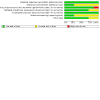

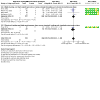


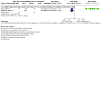
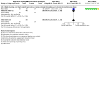
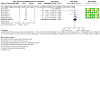
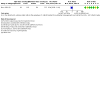

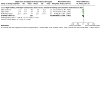


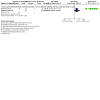
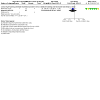
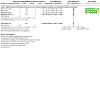
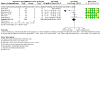

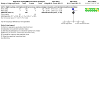
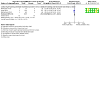
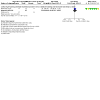



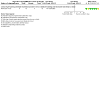
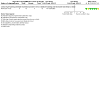
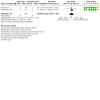


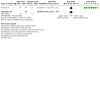
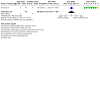
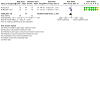

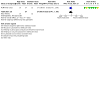
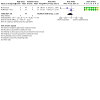


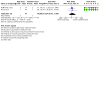
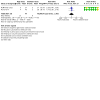




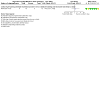

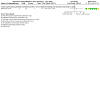


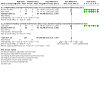
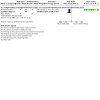
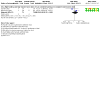
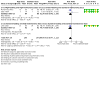
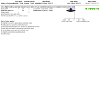



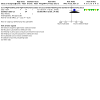

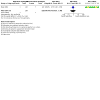
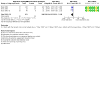
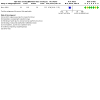

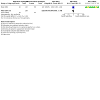

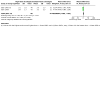
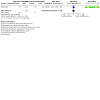




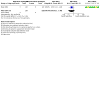
Update of
References
References to studies included in this review
McPherson 2015 {published data only}
Mohammed 2015 {published data only}
-
- Mohammed S, Nour I, Shabaan AE, Shouman B, Abdel-Hady H, Nasef N. High versus low-dose of caffeine for apnea of prematurity: a randomized controlled trial. In: Pediatric Academic Societies Annual Meeting. 2014. - PubMed
-
- NCT02103777. High versus low dose of caffeine for apnea of prematurity. www.drugsheet.com/trial/nct02103777-high-versus-low-dose-of-caffeine-for... 2014. - PubMed
Mohd 2021 {published data only}
-
- ACTRN. Randomized controlled trial (RCT) comparing between high versus standard dose caffeine citrate for apnoea in prematurity. www.who.int/trialsearch/Trial2.aspx?TrialID=ACTRN12619001708145 2019.
Scanlon 1992 {published data only}
Steer 2003 {published data only}
Steer 2004 {published data only}
-
- Charles BG, Townsend SR, Steer PA, Flenady VJ, Gray PH, Shearman A. Caffeine citrate treatment for extremely premature infants with apnea: population pharmacokinetics, absolute bioavailability, and implications for therapeutic drug monitoring. Therapeutic Drug Monitoring 2008;30(6):709‐16. [DOI: 10.1097/FTD.0b013e3181898b6f] [PMID: ] - DOI - PubMed
-
- Steer P, Flenady V, Shearman A, Charles B, Gray PH, Henderson-Smart D, et al, Caffeine Collaborative Study Group Steering Group. High dose caffeine citrate for extubation of preterm infants: a randomised controlled trial. Archives of Disease in Childhood - Fetal and Neonatal Edition 2004;89(6):F499-503. [DOI: 10.1136/adc.2002.023432] [PMID: ] - DOI - PMC - PubMed
References to studies excluded from this review
Autret 1985 {published data only}
-
- Autret E, Breteau M, Laugier J, Gold F, Gautier C, Majzoub S. Comparison of 2 different maintenance doses of caffeine in the treatment of apnea in premature infants [Comparaison de deux doses d'entretien différentes de caféine dans le traitement des apnées du prématuré]. Therapie 1985;40(4):235-9. [PMID: ] - PubMed
Cherif 2003 {published data only}
-
- Cherif A, Klouz A, Zouari B, Belkahia C, Boukef-Larguèche S. Monohydrated caffeine: which dosage is effective in the treatment of apnea of prematurity? [Caféine monohydratée: quelle posologie efficace dans le traitement des apnées du prématuré?]. Archives de Pédiatrie 2003;10(8):734-5. [DOI: 10.1016/s0929-693x(03)00345-2] - DOI - PubMed
Gray 2016 {published data only}
-
- Gray PH, Firman B. Early high dose caffeine citrate: effect on cranial ultrasound findings and neonatal neurological outcomeJournal of paediatrics and child health. In: Conference: 20th Annual Meeting of the Perinatal Society of Australia and New Zealand, PSANZ 2016. Australia. 2016.
Romagnoli 1992 {published data only}
Wan 2020 {published data only}
Yao 2021 {published data only}
-
- Yao LS, Lin XZ, Huang J, Tang LX. Clinical effect of an additional maintenance dose of caffeine before ventilator weaning in preterm infants with respiratory distress syndrome: a prospective randomized controlled trial. Zhongguo Dang Dai Er Ke Za Zhi 2021;23(1):31-6. [DOI: 10.7499/j.issn.1008-8830.2008044] [PMID: ] - DOI - PMC - PubMed
Zhang 2019 {published data only}
-
- A prospective randomized controlled trial for different maintaining doses of caffeine therapy for apnea of very low birthweight infants. www.who.int/trialsearch/Trial2.aspx?TrialID=ChiCTR1800019204 2018.
-
- Zhang X, Zhang HT, Lyu Y, Wang LF, Yang ZY. Clinical effect and safety of different maintenance doses of caffeine citrate in treatment of apnea in very low birth weight preterm infants: a prospective randomized controlled trial. Zhongguo Dang Dai Er Ke Za Zhi 2019;21(6):558-561. [DOI: 10.7499/j.issn.1008-8830.2019.06.011] [PMID: ] - DOI - PMC - PubMed
References to studies awaiting assessment
References to ongoing studies
NCT03298347 {published data only}
-
- Yuan S, Juan M. Caffeine for preterm infants with apnea of prematurity (AOP). www.ClinicalTrials.gov. Identifier: NCT03298347. 2 October 2017.
NCT04144712 {published data only}
-
- Farid YA, Mazrou EM, Badr El-Deen OG. High versus low dose caffeine as respiratory stimulant in preterm infants. NCT04144712 7 February 2020.
Oliphant 2020 {published data only}
-
- ACTRN12618001745235. Caffeine to improve oxygen levels in mildly preterm babies (Latte Dosage Trial). www.anzctr.org.au/Trial/Registration/TrialReview.aspx?id=375717 2018.
-
- Oliphant EA, McKinlay CD, McNamara DG, Alsweiler JM. Caffeine prophylaxis to improve intermittent hypoxaemia in infants born late preterm: a randomised controlled dosage trial (Latte Dosage Trial). British Medical Journal Open 2020;10(10):e038271. [DOI: 10.1136/bmjopen-2020-038271] [PMID: ] - DOI - PMC - PubMed
Additional references
Alur 2015
-
- Alur P, Bollampalli V, Bell T, Hussain N, Liss J. Serum caffeine concentrations and short-term outcomes in premature infants of 29 weeks of gestation. Journal of Perinatology: Official Journal of the California Perinatal Association 2015;35(6):434-8. [DOI: 10.1038/jp.2014.226] [PMID: ] - DOI - PubMed
Aranda 1979
-
- Aranda JV, Turmen T. Methylxanthines in apnea of prematurity. Clinics in Perinatology 1979;6(1):87-108. [PMID: ] - PubMed
Bayley 1993
-
- Bayley N. Bayley Scales of Infant Development. 2nd edition. San Antonio (TX): The Psychological Corporation, 1993.
Bayley 2006
-
- Bayley N. Bayley Scales of Infant and Toddler Development. San Antonio (TX): Harcourt Assessment, 2006.
Bell 1978
Blanchard 1992
-
- Blanchard P, Aranda J. Pharmacotherapy of respiratory control disorders. In: Beckerman R, Brouillette R, Hunt C, editors(s). Respiratory control disorders in infants and children. Maryland, USA: Williams and Wilkins, 1992:352-70.
Borenstein 2013
Brattström 2019
Bruschettini 2016
Charles 2008
-
- Charles BG, Townsend SR, Steer PA, Flenady VJ, Gray PH, Shearman A. Caffeine citrate treatment for extremely premature infants with apnea: population pharmacokinetics, absolute bioavailability, and implications for therapeutic drug monitoring. Therapeutic Drug Monitoring 2008;30(6):709-16. [DOI: 10.1097/FTD.0b013e3181898b6f] [PMID: ] - DOI - PubMed
Chen 2018
Cochrane EPOC Group 2017
-
- Cochrane Effective Practice and Organisation of Care (EPOC). Data extraction and management. EPOC resources for review authors, 2017. epoc.cochrane.org/epoc-resources-review-authors (accessed prior to 12 December 2019).
Cornette 2002
-
- Cornette LG, Tanner SF, Ramenghi LA, Miall LS, Childs AM, Arthur RJ, et al. Magnetic resonance imaging of the infant brain: anatomical characteristics and clinical significance of punctate lesions. Archives of Disease in Childhood. Fetal and Neonatal Edition 2002;86(3):F171-7. [DOI: 10.1136/fn.86.3.f171] [PMID: ] - DOI - PMC - PubMed
Crossley 2012
Davis 2020
Deeks 2022
-
- Deeks JJ, Higgins JP, Altman DG, editor(s). Chapter 10: Analysing data and undertaking meta-analyses. In: Higgins JP, Thomas J, Chandler J, Cumpston M, Li T, Page MJ, editor(s). Cochrane Handbook for Systematic Reviews of Interventions Version 6.3 (updated February 2022). Cochrane, 2022. Available from www.training.cochrane.org/handbook.
Di Fiore 2010
Dobson 2017
-
- Dobson NR, Rhein LM, Darnall RA, Corwin MJ, Heeren TC, Eichenwald E, et al. Caffeine decreases intermittent hypoxia in preterm infants nearing term-equivalent age. Journal of Perinatology: Official Journal of the California Perinatal Association 2017;37(10):1135-40. [DOI: 10.1038/jp.2017.82] [PMID: ] - DOI - PubMed
Doyle 2016
-
- Doyle J, Davidson D, Katz S, Varela M, Demeglio D, DeCristofaro J. Apnea of prematurity and caffeine pharmacokinetics: potential impact on hospital discharge. Journal of Perinatology: Official Journal of the California Perinatal Association 2016;36(2):141-4. [DOI: 10.1038/jp.2015.167] [PMID: ] - DOI - PubMed
Egger 1997
Eichenwald 1997
Endesfelder 2020
Fewell 2007
Gillot 1990
GRADEpro GDT [Computer program]
-
- GRADEpro GDT. Version accessed 16 March 2018. Hamilton (ON): McMaster University (developed by Evidence Prime), 2015. Available at gradepro.org.
Griffiths 1954
-
- Griffiths R. The Abilities of Babies: a Study in Mental Measurement. New York (NY): McGraw-Hill Book Co. Inc., 1954.
Henderson‐Smart 1981
Henderson‐Smart 2010a
Henderson‐Smart 2010b
Henderson‐Smart 2010c
Higgins 2011
-
- Higgins JP, Altman DG, Sterne JA: on behalf of the Cochrane Statistical Methods Group and the Cochrane Bias Methods Group. Chapter 8: Assessing risk of bias in included studies. In: Higgins JP, Green S, editor(s). Cochrane Handbook for Systematic Reviews of Interventions Version 5.1.0 (updated March 2011). The Cochrane Collaboration, 2011. Available from handbook.cochrane.org.
Higgins 2019
-
- Higgins JP, Thomas J, Chandler J, Cumpston M, Li T, Page MJ, Welch VA (editors). Cochrane Handbook for Systematic Reviews of Interventions Version 6.0 (updated July 2019). Cochrane, 2019. Available from www.training.cochrane.org/handbook. - PMC - PubMed
Higgins 2020
-
- Higgins JP, Li T, Deeks JJ. Chapter 6: Choosing effect measures and computing estimates of effect. In: Higgins JP, Thomas J, Chandler J, Cumpston M, Li T, Page MJ, et al, editor(s). Cochrane Handbook for Systematic Reviews of Interventions Version 6.1 (updated September 2020). Cochrane, 2020. Available from www.training.cochrane.org/handbook.
Higgins 2022
-
- Higgins JP, Eldridge S, Li T, editor(s). Chapter 23: Including variants on randomized trials. In: Higgins JP, Thomas J, Chandler J, Cumpston M, Li T, Page MJ, editor(s). Cochrane Handbook for Systematic Reviews of Interventions Version 6.3 (updated February 2022). Cochrane, 2022. . Available from www.training.cochrane.org/handbook.
Howell 1981
-
- Howell J, Clozel M, Aranda JV. Adverse effects of caffeine and theophylline in the newborn infant. Seminars in Perinatology 1981;5(4):359-69. [PMID: ] - PubMed
International Committee 2005
Jacobs 2013
Janvier 2004
Jobe 2001
Jobe 2017a
Jobe 2017b
Koons 1993
Kyriacou 2016
Lee 1997
Lee 2002
-
- Lee CY, Su BH, Lin TW, Lin HC, Li TC, Wang NP. Risk factors of extubation failure in extremely low birth weight infants: a five year retrospective analysis. Acta Paediatrica Taiwanica 2002;43(6):319-25. [PMID: ] - PubMed
Limperopoulos 2007
-
- Limperopoulos C, Bassan H, Gauvreau K, Robertson RL Jr, Sullivan NR, Benson CB, et al. Does cerebellar injury in premature infants contribute to the high prevalence of long-term cognitive, learning, and behavioral disability in survivors? Pediatrics 2007;120(3):584-93. [DOI: 10.1542/peds.2007-1041] [PMID: ] - DOI - PubMed
Marques 2021
Marshall 2018
McDonald 2017
-
- McDonald S, Noel-Storr AH, Thomas J. Harnessing the efficiencies of machine learning and Cochrane Crowd to identify randomised trials for individual Cochrane reviews. GlobalEvidence Summit, Cape Town, South Africa; 13th – 16th September 2017.
Millar 2004
Moher 2009
Montenegro 2017
Murner‐Lavanchy 2018
Nagatomo 2016
NIH 1979
-
- National Institutes of Health. Report of workshop on bronchopulmonary dysplasia. In: NIH Publication No. 80-1660; 1978 December 4-6; Bethesda (MD). Washington, DC: National Institutes of Health, 1979.
Noel‐Storr 2018
-
- Noel-Storr AH and the Project Transform team. Cochrane Crowd: new ways of working together to produce health evidence. Evidence Live 2018, Oxford, UK; 18–20 June 2018.
Nylander Vujovic 2020
Pakvasa 2018
-
- Pakvasa MA, Saroha V, Patel RM. Optimizing caffeine use and risk of bronchopulmonary dysplasia in preterm infants: A systematic review, meta-analysis, and application of grading of recommendations assessment, development, and evaluation methodology. Clinics in Perinatology 2018;45(2):273-91. [DOI: 10.1016/j.clp.2018.01.012] [PMID: ] - DOI - PubMed
Papile 1978
Parodi 2015
Poets 2015
RevMan Web 2020 [Computer program]
-
- Review Manager Web (RevMan Web). Version 1.22.0. The Cochrane Collaboration, 2020. Available at revman.cochrane.org.
Rhein 2014
-
- Rhein LM, Dobson NR, Darnall RA, Corwin MJ, Heeren TC, Poets CF, et al, Caffeine Pilot Study Group. Effects of caffeine on intermittent hypoxia in infants born prematurely: a randomized clinical trial. JAMA Pediatrics 2014;168(3):250-7. [DOI: 10.1001/jamapediatrics.2013.4371] [PMID: ] - DOI - PubMed
Rutherford 2010
Saroha 2020
Schmidt 2006
Schmidt 2007
Schmidt 2017
-
- Schmidt B, Roberts RS, Anderson PJ, Asztalos EV, Costantini L, Davis PG, et al. Academic performance, motor function, and behavior 11 years after neonatal caffeine citrate therapy for apnea of prematurity: an 11-year follow-up of the CAP randomized clinical trial. JAMA Pediatrics 2017;171(6):564-72. [PMID: ] - PubMed
Schünemann 2013
-
- Schünemann H, Brożek J, Guyatt G, Oxman A, editor(s). Handbook for grading the quality of evidence and the strength of recommendations using the GRADE approach (updated October 2013). GRADE Working Group, 2013. Available from gdt.guidelinedevelopment.org/app/handbook/handbook.html.
Stevenson 2007
Tabacaru 2017
Thomas 2017
Urru 2023
Vliegenthart 2018
Walsh 2004
-
- Walsh MC, Yao Q, Gettner P, Hale E, Collins M, Hensman A, et al, National Institute of Child Health and Human Development Neonatal Research Network. Impact of a physiologic definition on bronchopulmonary dysplasia rates. Pediatrics 2004;114(5):1305-11. [DOI: 10.1542/peds.2004-0204] [PMID: ] - DOI - PubMed
Publication types
MeSH terms
Substances
LinkOut - more resources
Full Text Sources
Medical
Miscellaneous

